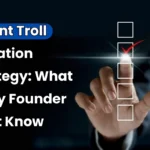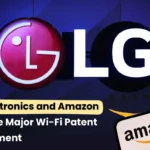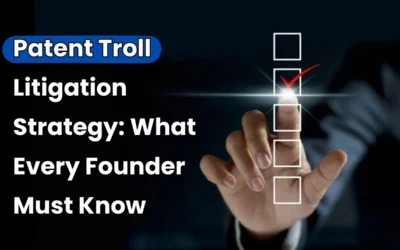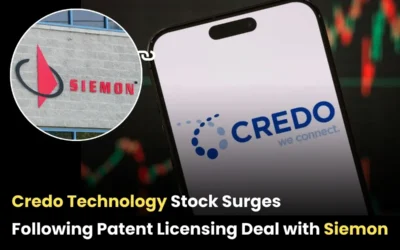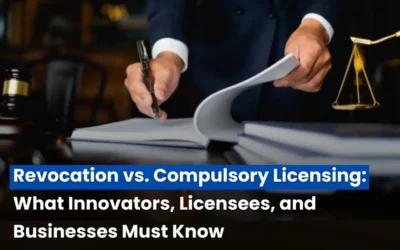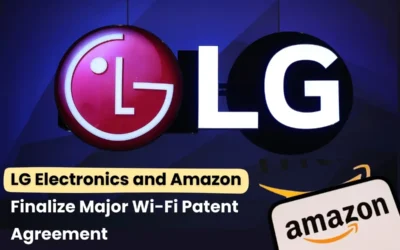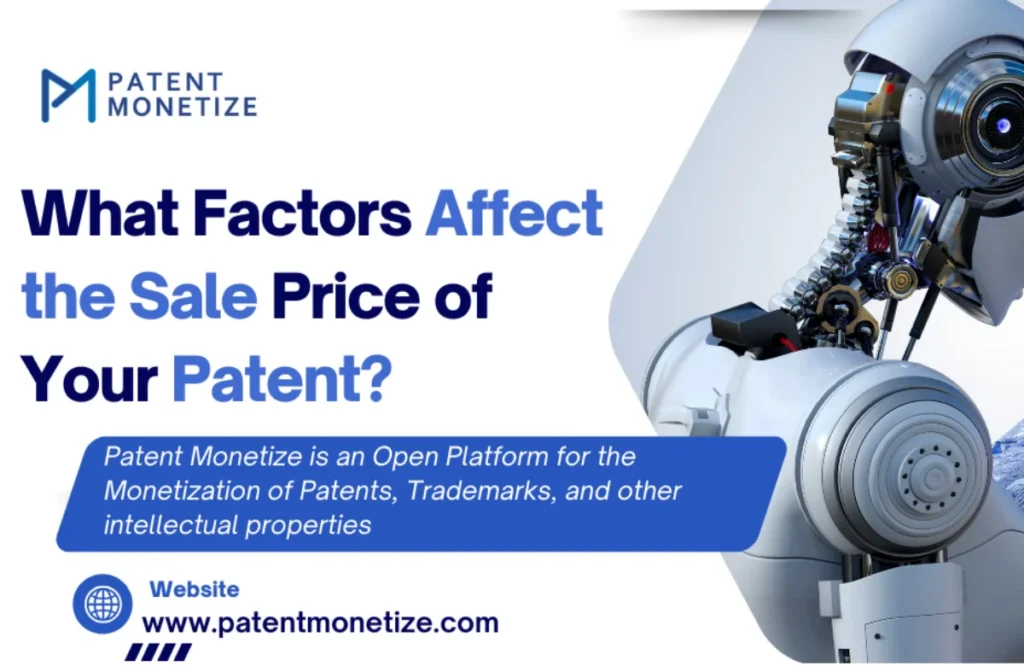
Arguably, no intellectual property is perhaps as valued as a patent. What would be protected in this regard is the patented, unique idea of the inventor, not only from illegal manufacture or importation, but even serves as an important asset when one party decides to sell or license patent to another party. It would then be logical to ponder questions such as
What determines the price for the sale of my patent?
The range of the selling price of a patent can be little bit wide due to several key factors. Being acquainted with them will enable you to set a fair asking price and help in well-informed decision-making at the time of selling intellectual property. In this article, we are going to take you through patent valuation factors most likely to influence the sale price of your patent and some insight into how the value of that patent can be maximized.
1. Market demand and potential of the patent?
Perhaps the most important variable that would influence the selling price for your patent was the demand for the product or process that it protects. In a sense, if your patent relates to technology or a product that addressed an urgent need that was missing from the market, it’s likely to sell at much higher prices. Demand for your invention may find its way through industries looking to solve some innovations. For example, health, renewable energy, or technology patents will be expensive because its potential can be applied everywhere, engaging millions, but if that technology does not solve the issue at hand, then that patent will not attract high demands and thus the price falls.
2. Market Size of the Patent:
Another factor apart from demand used in the determination of the sale price for your patent is the size of the market to which the patent will be addressed. It could be such that a higher demand price would be one translating to a higher sale price for your patent just because the market is large and, hence, more numerous possible customers. For example, a patent for consumer goods that could be made anywhere on earth would be worth more than a patent targeted at trying to sell some small, specialized product. To the investors as well as to any firm, those patents promising adequate market coverage are worth good money and high returns, and these patents normally call for a premium over the rest. Their value would then be a function of revenue likely to be generated by a patent owner, directly proportional to its measure.
Read Also: Patent Licensing vs. Selling: How to Choose the Right Strategy for Your Invention
3. Patent Strength and Coverage
The costlier the patent will be, the more powerful and comprehensive your patent is. A good patent is well written and clearly describes the invention with itself providing wide protection to the idea. An obscure patent or one containing weakness cannot be easily sold and sure will not fetch any premium price. The wider the range of coverage of your patent has, the higher will be your patent’s value. These often garner a gigantic scope of coverage since they often result in hampering of innovation of goods and processes that are reasonably analogous. General usage of either type as far as scope or area coverage for that portion of your patent covering application to a greater degree will possess increased value as a patent that would have a far less number of applications, be more precious.
4. Patent’s remaining life.
You will also have to calculate how much to sell your patent for from the remaining years of your patent. A patent granted has 20 years from the date of application for patent, but in the last few years of a patent’s term, its value starts depleting. Hence, a patent with many years still remaining on it has a better chance of getting commercialized, which leads to a higher sale price. If your patent runs for a few years, then the selling price will be low since the buyer will have a lesser period to gain profits from the invention. But if your patent is about to lapse, though, it can still be sold since it has covered a product or process that has a continuous demand.
Read Also: Best Ways to Sell a Patent: How to Get Maximum Value for Your Invention
5. Patent commercial potential
One of the factors that goes into assessing a selling price is the potential that a patent can offer to be applied in commerce. The less complicated it can be translated for the invention toward a saleable product or service, the likelier the selling price will prove to be that much greater. Now it is only a million times more valuable, if it is already implemented or at least part of the working prototype, because then it would definitely demonstrate whether patented technology indeed works and does work for real. This is because proven or emerging business interests usually enjoy a higher price for the sale of patents. Generally, patent customers target those patents that have been applied for and proved rewarding since they are most likely to reward.
6. Patent’s uniqueness and scarcity
It is relatively more valuable than the standard patent. The less frequently produced or patented will be more or less different from any already existing patents. This will create fewer competitors that make something or technology like it. More buyers are willing to pay a premium for such a one-of-a-kind invention that holds a comparative advantage in the marketplace. In case the patent rights include that which can’t be made elsewhere or if the technological jump is concerned, then those patents can achieve a much more luxurious price. This would be, too, rare, one in a million, and this greatly contributes to the perceived value of your patents, making this all the more desirable to potential buyers.
7. Commercial success or proof of concept of your patent
Another factor that may determine the price at which the record of your patent sells is whether your invention has at any point enjoyed commercial success, or if there already exists a workable proof of concept. Then the buyer will likely be much more confident that the patent actually works. A patent history in terms of money generation or acquired by an established company means having a higher price sale than any unproven patent at the marketplace. If the patent has a good commercial track record, say through successful licensing agreements or sales of products, its value will definitely see a high amount of rise. Investors and businesses will pay a premium for patents that have succeeded in real-world applications.
8. Patent’s Geographical Coverage
Another aspect is the territorial coverage of your patent. That is, patents are granted by individual countries or regions and can be severely affected by territories in which the patent is held. A patent that has been protected in a number of different countries or regions is more valuable than one with protection in a single country only. If your patent only offers protection in just one country, then its market to sell or license it would be smaller; hence its selling price will fall. Global patent protection usually receive more bidders because they can open doors to bigger markets and more avenues for commercialization.
9. Risk of Litigation over the Patent
This can further determine the sale price of a patent due to the risk in patent litigation. If your patent is under extended or threatened patent litigation, buyers may be cautious about how much to offer for this patent since it may raise issues concerning its enforceability. The buyer would have to consider the potential cost of legal battles and that of enforcing the patent. The perception of risk will most often ensure that patents with some history of litigation or infringements will sell cheaply. Still, your patent is going to be extremely valuable if it has undergone court validation and has tested its strength in keeping off infringement.
10. Economic and Market Conditions
Last but not least, there are the effects of broader economic and market conditions on your sale price. When the economy is in a recession or in uncertain periods, an investing buyer will not bother to add any intellectual property into the portfolio because this reduces the prices that your patent can sell for. Meanwhile, during booming sectors or even in periods of high economic growth, patent prices tend to appreciate because companies start to look at new innovations and try to add it to new fronts to stay competitive. The most critical factor determining the sale price of your patent is the current economic climate and market trends.
Read Also: New AI Patent Licensing Body Starts $100 Million Enforcement Drive
Conclusion
Knowing and understanding what usually influences the amount you could make from selling your patent, upon deciding to sell it will definitely help. Those factors might be market demand, the strength or scope of your patent, and many more. And if you maximize the level of demand on your patent, its breadth, and other qualities that give commercial viability, then you may possibly get a better sale price from it. Taking time to analyze these variables and discussing these with IP-specific professionals can give you some sort of competitive price estimation for your patent. Whether you sell or license your patent, understanding the factors contributing to a lower sale price might help you act strategically.
